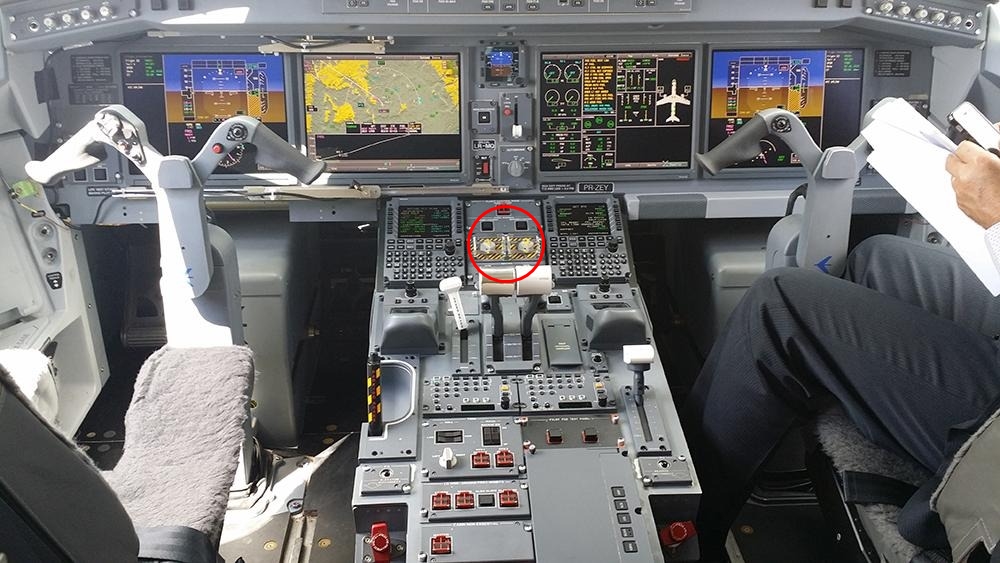The Air India Accident Investigation Bureau (AAIB) released preliminary findings on July 11th regarding the Boeing 787 crash last month, which involved 242 people. The report indicated that the fuel control switches for both engines were moved from the "on" to "off" position, one second apart.
Black box data revealed this occurred seconds after takeoff, causing the engines to lose thrust. Cockpit recordings captured one pilot asking why the other shut off the fuel, to which the other pilot responded that they didn't. The report doesn't specify which pilot was the captain and which was the first officer.
While the preliminary report highlights the primary cause of the Air India incident, it doesn't explain why the fuel switches were turned off – whether it was accidental, intentional, or a technical malfunction.
 |
Location of the fuel control switches on a Boeing 787. Graphic: Seattle Times |
Fuel switches control the fuel valves to the engines. In the "on" position, the valves open, supplying fuel for engine operation. When switched "off," the fuel supply is cut, completely stopping the engines.
The two fuel switches on the Boeing 787 are on the central control panel, just below the throttle, a convenient location for pilots during critical phases of flight.
When pushing back from the gate and preparing to taxi, the pilot flips the switch up from "off" to "on" to start the engines, naturally placing their hand on the throttle to control thrust. Upon returning to the gate, the pilot reduces throttle and, in a single motion, switches the fuel off, ending the flight, according to the Hindustan Times.
The switches' location also allows quick action during emergencies, such as engine fire or failure. In such cases, pilots reduce throttle to minimum thrust, then adjust the switches to shut down or restart the engines.
Airbus, the European aircraft manufacturer, also places its fuel switches in this location, although the design differs from Boeing's. Airbus switches are labeled "ENG 1" and "ENG 2," corresponding to each engine, with indicator lights below.
 |
Location of the two fuel switches (circled in red) on an Airbus aircraft. Image: YouTube/SabiJetTech |
Brazilian aircraft manufacturer Embraer, however, positions the fuel switches above the engine start buttons, which are above the throttle.
Given their accessibility, aircraft manufacturers have implemented safeguards against accidental switching, a standard believed to have originated in the 1950s.
Boeing uses a guard frame around the switches. Each switch has a spring-loaded locking mechanism to keep it in place. To change its state, the pilot must grip the switch knob, pull it up with some force, and then move it. The "on" and "off" positions are clearly marked on the panel.
"You can't accidentally change these switches. They have springs and detents to prevent that," John Cox, a retired captain and CEO of Safety Operating Systems, an aviation safety consulting firm in the US, told Reuters.
Airbus aircraft also feature spring-loaded locking mechanisms. On Embraer aircraft, the two engine fuel supply buttons are brightly colored and covered by protective caps.
 |
Fuel switches on the central control panel of an Embraer E190-E2. Image: Aviation Week |
Aviation safety experts find it highly improbable that the pilots on the Air India flight accidentally flipped both switches simultaneously.
"If one of the pilots caused the incident, the question is why. Was it intentional or due to confusion? Neither seems likely, as the report indicates no unusual communication between the pilots," Shawn Pruchnicki, an aviation expert at Ohio State University, told the BBC.
Families of the victims expressed disappointment with the preliminary report. "Besides the final exchange between the pilots, there's no indication of the cause," said Imtiyaz Ali, who lost his brother, sister-in-law, and two nephews in the tragedy.
Ali hopes Indian officials will provide more information. "It's crucial. We want to know exactly what happened, even if it doesn't change anything. At least we'll have answers," he said.
Nhu Tam (According to Reuters, Hindustan Times, BBC)












